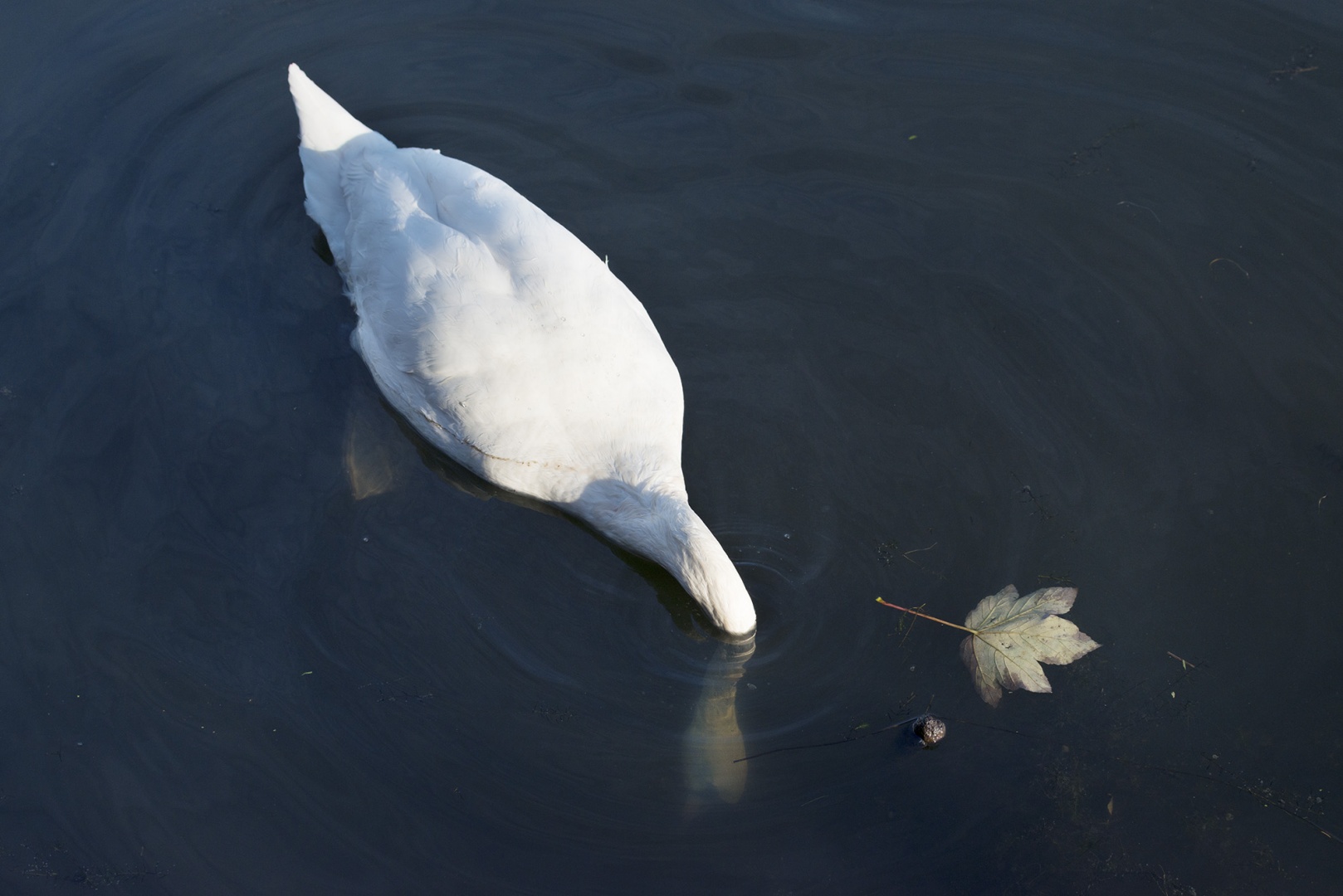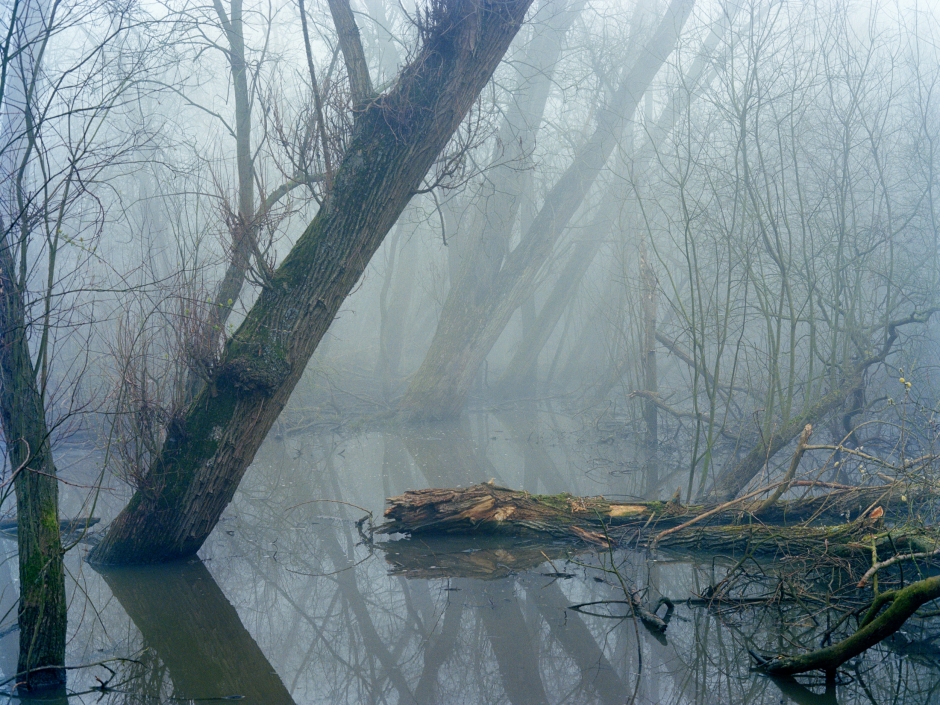Freya Najade
SMBH Magazine
Artist Interview
Published summer 2016.

From Along the canal, courtesy of Freya Najade & Hoxton Mini Press ©
These man-made waterways have seen the city endure, change and shift over the centuries, but all the while they have remained a unique defence for nature’s dwindling reserves and a place of quiet discovery for the city’s dwellers. Dorrell Merritt sat down with Najade to discuss her new book Along the Hackney Canal, investigating the drifting life of these familiar dreamscapes.
Dorrell Merritt— Tell me a little about the starting point for the series; how did the idea first develop and what pushed you to begin it?
Freya Najade— The series ‘Along the Hackney Canal’ has started very differently than my other series’ I have worked on so far. It was not an idea that triggered working on this series. It all started with me moving to Hackney in London and not too far away from the canal in 2007. I went for walks by the canal and sometimes I took a camera with me, which I did a lot at that time. A few years later when looking through my images I thought that there might be actually material for a project, which could be interesting in pursuing further and a loose project idea started to develop. I continued working on the series but very much on a just-for-fun basis. Eventually about two years ago I became more serious about it and the idea emerged of making a photo book about the canals and surrounding areas. Last year around this time I showed my images and work in progress to Martin and Ann from Hoxton Mini Press. Both really liked it a lot and wanted to publish it. After a few more months working on it, the book comes out this month.
DM— What season/time of year was the most productive for you in terms of producing images?
FN— In terms of productivity, at the beginning I was especially productive during spring. It was that time of the year, which really made me want to go out with my camera, but slowly that expanded to winter or foggy days in autumn. I probably photographed the least during summer time, perhaps also because I have been always a lot away in summer. And even now after the book is made, I still go out there with my camera.
DM— The canals of East London are often the settings of many urban myths and tales teetering between the lines of hearsay and imagination, as well as being home to unexpected discoveries morbid, bizarre and otherwise. What was the most unusual thing that you came across, during working on the project?
FN— It’s difficult to pin down the most unusual thing I came across, but during each walk there was always something which surprised me or I discovered anew; may it be a scooter in a dried out river bed or a corner in the woods where I had never been before. But often it was a mundane scene that I found very special by looking closer at it, for example how the head of the swan looked when it is under water or the reflections of the canal on the concrete ceiling of a bridge.

From Along the canal, courtesy of Freya Najade & Hoxton Mini Press ©
DM— Talk me through this image (above); where abouts was it taken, and what did it communicate when seeing it for the first time?
FN— This image was taken in the woods very close to the canal, River Lee Navigation, further up North. It had been a very foggy morning, which made me want to come out with my camera. When I discovered the flooded woodland near the canal and saw how the fog coated the trees and touched the water I knew I wanted to capture this. It felt so beautiful and at the same time very sad and morbid. I love this juxtaposition.
DM— What stretch of the canal’s route remains in your mind as being particularly interesting?
FN— My favourite stretch of the canal starts in Hackney Wick and goes up north to Springfield Park. I love the quietness of this area and I am always amazed how few people come here.
DM— How did working on this series, differ from previous series? With it being independent of human presence or external reliance, was it a more relaxed, or therapeutic project to work on?
FN— Compared to other series I have worked on, it has been definitely very relaxing to work on this project. Firstly, I had no time pressure, which I had in other series when I travelled somewhere and had to achieve a certain goal in a specific amount of time. Secondly, you are right, the fact that I didn’t photograph any people made it even more peaceful. Photographing people is always to a certain degree stressful, even though it can be totally fun and you get the chance to talk to somebody you don’t know who might be very inspiring. In this project it was just myself, exploring some of my favourite places in London with my camera. I wouldn’t say it was therapeutic but certainly very calming and almost meditative.

From Along the canal, courtesy of Freya Najade & Hoxton Mini Press ©
DM— A great deal of the canal suffers with the strain of human presence, often in the forms of litter, fly tipping and chemical pollution. How did you find interacting with these aspects, as a photographer? Was there any bias in seeking out, or censoring these things?
FN— For me the litter and the pollution are very much part of the canal area. I don’t feel bias about it at all and didn’t censor it. In fact it was for me very important to capture this aspect as well. So a lot of the images depict litter and objects left behind by humans such as the oil spill on the water, the Iceland bag or tarpaulin in the canal.
DM— With Hackney & Walthamstow Marshes covering a great span of the canalised River Lea’s route, it’s easy to get lost within their dense and often shangri-la-like hidden and seldom trodden paths, and scenes of little-observed nature. Did shooting the project change your perceptions of East London, and what it has to offer in regards to nature-based-escape?
FN— I started photographing around the canals right from the beginning when I moved to Hackney. It was almost that I documented photographically my search for nature in East London. So my perception of East London rather evolved with the project as opposed to changing it. However, through this project I discovered so many corners, I probably would have never discovered otherwise. As such, the series definitely increased my appreciation for the nature and nature-based-escapes in East London.
DM— When is the book itself due to launch, and do you have any other plans for the series now that it has been completed?
FN— The book will be launched today (29th September). I definitely would like to publish the series via different online and print platforms as widely as possible. I am also planning to exhibit the series in the next year and I am looking at the moment into different options.